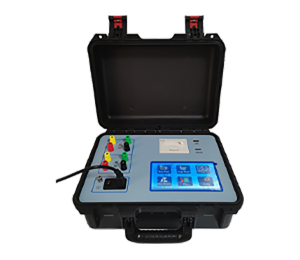 English
English


flash and fire point tester
Understanding Flash and Fire Point Testers A Comprehensive Overview
In the realm of industrial safety and material testing, the measurement of flash and fire points is of paramount importance. These metrics not only determine the safety of a particular substance but also inform manufacturers and users about potential hazards associated with handling and storage. Flash and fire point testers are essential instruments in this process.
What are Flash and Fire Points?
Before delving into the function and significance of flash and fire point testers, it is essential to define the terms flash point and fire point. The flash point of a substance is the lowest temperature at which its vapors can ignite in the presence of an ignition source. This suggests that while the substance may not sustain a flame, it can still produce enough vapors to pose a risk. The fire point, on the other hand, is the temperature at which the substance not only ignites but can also continue to burn when exposed to an ignition source.
Understanding these points is crucial because they help in assessing the combustibility risk of various materials, particularly in industries such as manufacturing, petrochemical, and transportation.
The Role of Flash and Fire Point Testers
Flash and fire point testers are specialized devices used to determine these crucial temperature points for flammable liquids. They help ensure compliance with safety regulations, which is critical for preventing fires and explosions in workplaces where flammable materials are handled. There are several methods and types of testers, including the closed cup tester and the open cup tester, each suited to different applications and materials.
1. Closed Cup Testers These devices measure flash and fire points in a sealed environment, minimizing the amount of vapor that escapes into the atmosphere. This method is particularly useful for substances that release hazardous vapors. The testing process involves heating the sample and periodically introducing an ignition source to gauge vapor ignition.
2. Open Cup Testers These testers expose the substance directly to the air. While they are simpler to use and often more cost-effective, they can be less accurate than closed cup testers, especially for materials that have a low flash point. The open cup method allows vapors to escape, which can underestimate the flash point of highly volatile substances.
flash and fire point tester

Importance in Industry
The results obtained from flash and fire point testers are vital for several reasons
- Safety Compliance Understanding the flash and fire points is crucial for safety regulations compliance, helping organizations avoid potential hazards that could lead to accidents.
- Material Selection Industries can make informed decisions regarding substantiating materials, particularly in applications requiring high temperature and risk management.
- Storage and Handling Guidelines Knowing the flash and fire points aids in developing appropriate storage and handling guidelines, ensuring that materials are kept safe from ignition sources.
- Fire Risk Assessment Regular testing helps in assessing the risk factors associated with different materials, allowing organizations to implement preventative measures.
Conclusion
In conclusion, flash and fire point testers play a critical role in maintaining safety standards across various industries. By accurately determining the flash and fire points of materials, these devices help organizations mitigate risks associated with flammable substances. With ongoing advancements in technology, the effectiveness and accuracy of these testers continue to evolve, reinforcing their importance in industrial safety protocols. By prioritizing the utilization of flash and fire point testers, companies can create safer working environments and minimize the risk of fire-related incidents, ultimately leading to increased productivity and innovation.
-
Differences between open cup flash point tester and closed cup flash point testerNewsOct.31,2024
-
The Reliable Load Tap ChangerNewsOct.23,2024
-
The Essential Guide to Hipot TestersNewsOct.23,2024
-
The Digital Insulation TesterNewsOct.23,2024
-
The Best Earth Loop Impedance Tester for SaleNewsOct.23,2024
-
Tan Delta Tester--The Essential Tool for Electrical Insulation TestingNewsOct.23,2024





